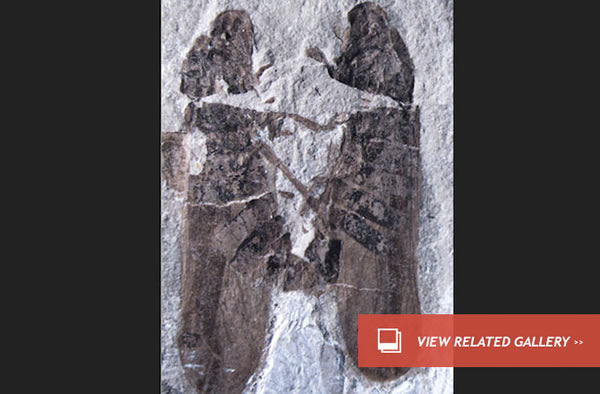Mating Bugs Etched in Stone for 165 Million Years
A sexual act performed during the Middle Jurassic was frozen in time and is now visible to us, thanks to a fossil nicknamed “Forever Love.”
The fossil, described in the latest PLoS ONE, presents a pair of copulating froghoppers that lived 165 million years ago in what is now northeastern China. The fossil is the earliest record of copulating insects to date.
“We found these two very rare copulating froghoppers, which provide a glimpse of interesting insect behavior and important data to understand their mating position and genitalia orientation during the Middle Jurassic,” co-author Dong Ren of Capital Normal University in China, said in a press release.
Ren and his colleagues point out that our current knowledge of mating positions and genitalia orientation of prehistoric insects and animals is limited, to say the least.
In this fossil, no one doubts what was going on.
Froghoppers are tiny insects that hop from plant to plant in the way that small frogs hop around.
The insects also apparently slept around. The now-fossilized male (in the photo above, at left) inserted his reproductive organ into the female’s copulatory structure.
It’s unclear what happened after that, though. Somehow the two were entombed in this position.
What’s remarkable is that their belly-to-belly mating position, and their genital symmetry, have remained static in froghoppers over the millions of years. We humans are forever “upgrading” this and that gadget but, in nature, if it isn’t broken and the circumstances remain similar, it stays the same.
This isn’t the first instance where copulating prehistoric species perished during the act, later fossilizing. Last year, a paper described a pair of mating turtles dating to the Eocene — 34 to 56 million years ago.
Photo: Li S, Shih C, Wang C, Pang H, Ren D (2013) Forever Love: The Hitherto Earliest Record of Copulating Insects from the Middle Jurassic of China. PLoS ONE 8(11): e78188. doi:10.1371/journal.pone.0078188(Nov 6, 2013 05:00 PM ET // by Jennifer Viegas)












